
Rediscovering Japan

Rediscovering Japan
Travel (Nikko (Part 2) (Futarasanjinja/Rinnouji/Taiyuuin))

by tomizuta
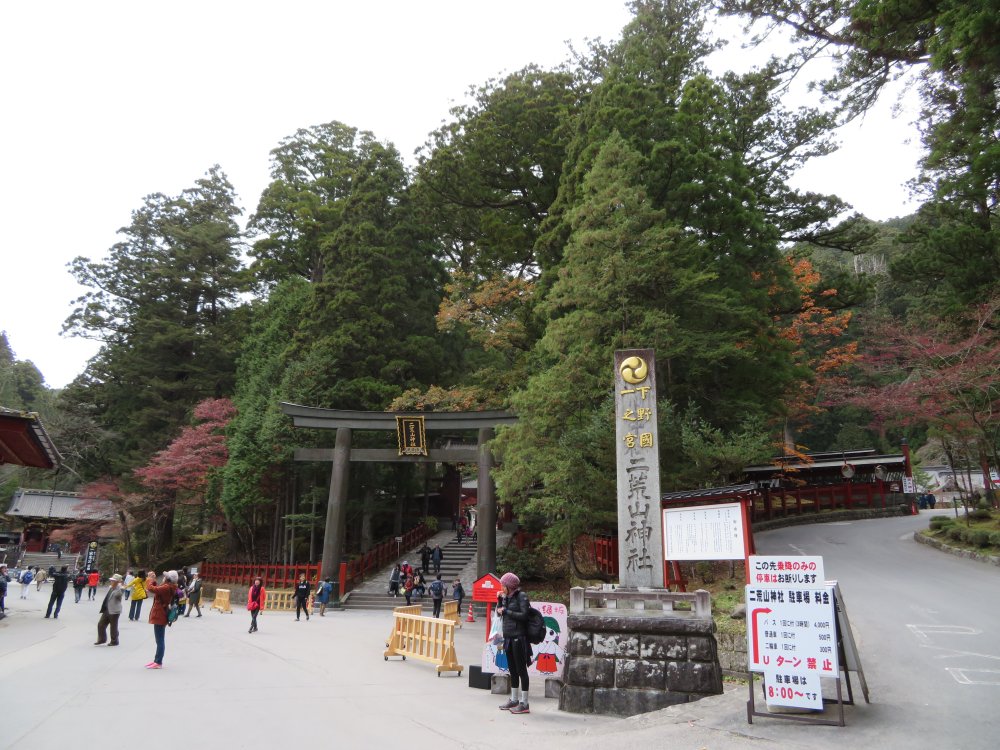
Futarasan-jinja is located between Toushouguu and Taiyuuin.
Walking west from Toushouguu towards Taiyuu-in, the approach to Futarasan Shinto Shrine is on the right. Although the webpage of Rinnouji writes that Futarasan-jinja was founded by the high Buddhist priest Shoudou in the 8th century, I understand that relics discovered on Mount Nantai (Nantaizan) suggest a much earlier existence of worshipping the mountain as a deity. The webpage of Futarasan-jinja tells us that it is composed of three shrines, the Gohonsha (in Nikko City and adjacent to Toushouguu/Rinnouji), Chuuguushi (by Lake Chuuzenji) and Okumiya (on top of Mount Nantai). We went up the steps to the Gohonsha area.
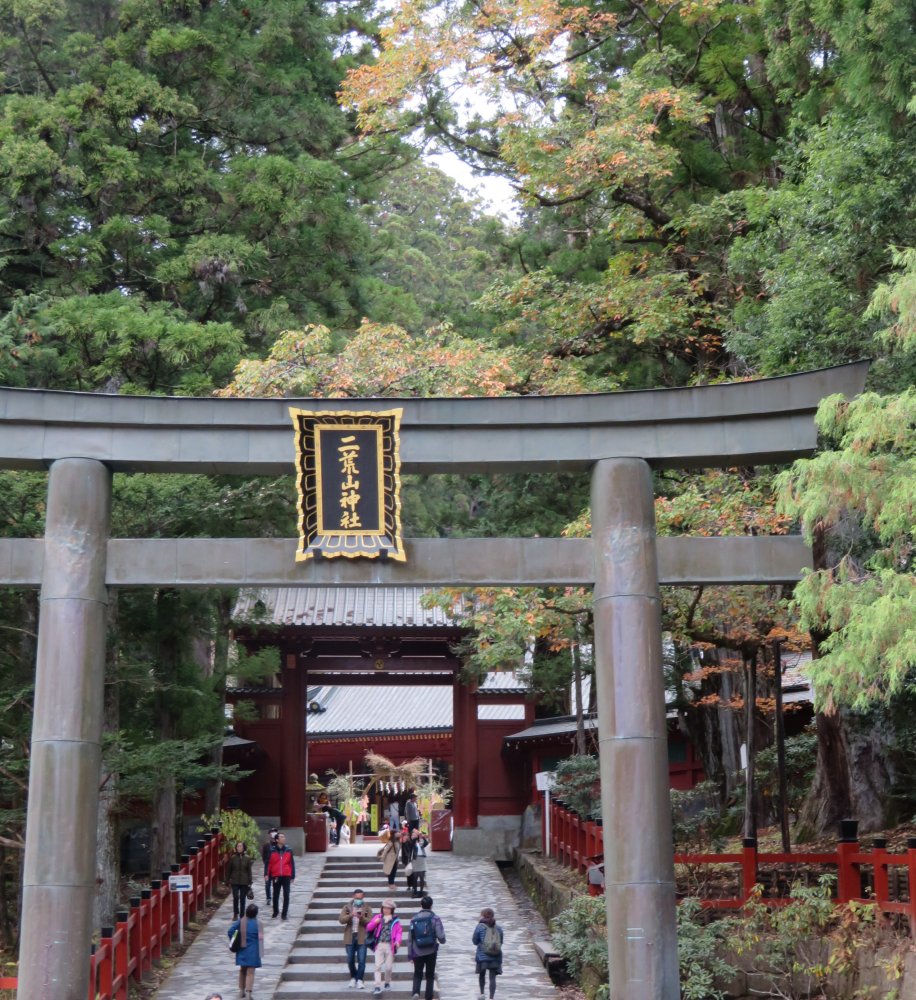
The entry torii gate of Futarasanjija. The shrine blends beautifully into the back mountain.
As noted before, the Nikko shrines and temple fell into decline until the high Buddhist priest Tenkai shed the spotlight on Nikko again in the early 17th century. Most of the main buildings including the Haiden (prayer building) and the Honden (main shrine) behind were constructed in 1619, refurbished in 1645 and has since been preserved to this day.
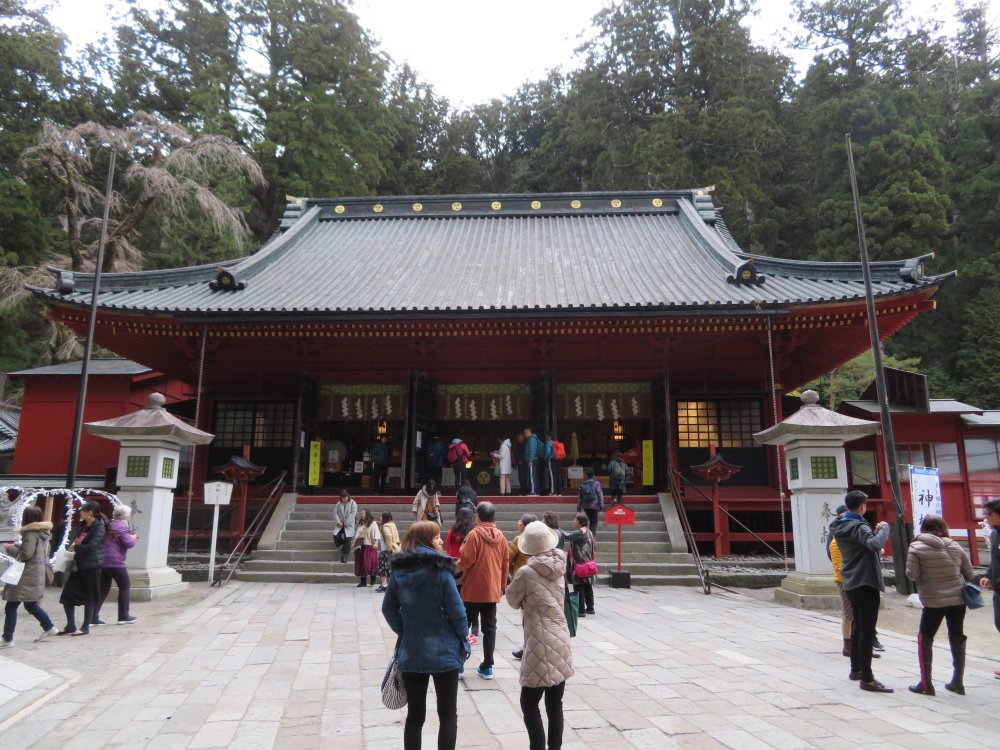
The Haiden from 1645 has been designated as a World Heritage component together with the Honden behind.
We visited the Shin-yosha, Daikokuden and Mitomo-jinja, all components of the World Heritage designation. The Shin-yosha houses the portable shrines for the deities to mount. It is the oldest building in Nikko built in 1617 and later relocated to this site. It has a relatively simple style compared with the later buildings.
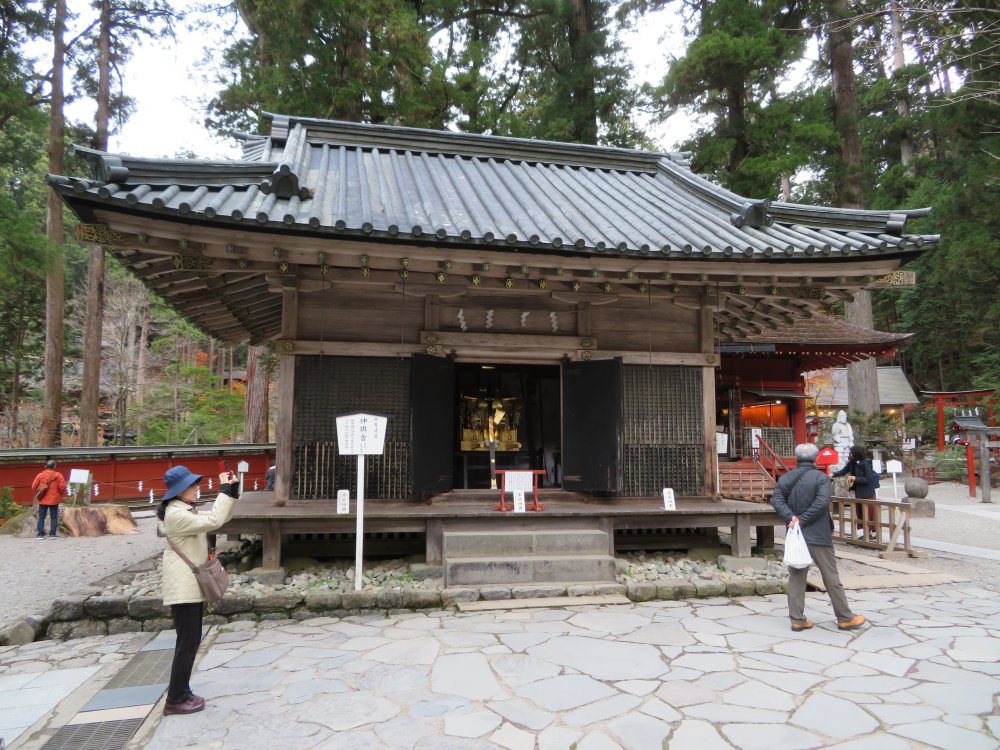
The Shin-yosha is the oldest building in Nikko built in 1617 and later relocated to this site.
The Daikokuden is a shrine dedicated to Ookuninushinomikoto, the founder
God of Japan. Ookuninushinomikoto, which till the Kamakura era was depicted
as a fearful God, later became to be recognized as Daikokuten (originally
a Hindu deity) bringing prosperity to merchants. The shrine was built in
1745.
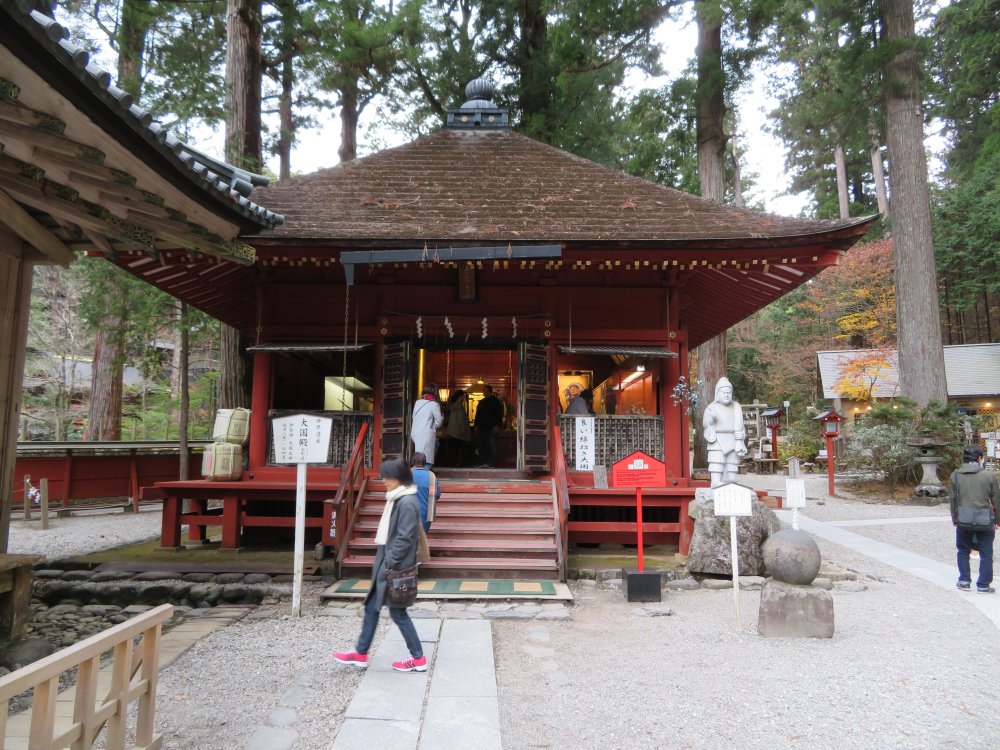
The Daikokuden is a shrine dedicated to Ookuninushinomikoto, the founder God of Japan.
Next to the Daikokuden is another shrine Mitomojinja. Mitomo means “company” and the worshipped deity is Sukunahikonanomikoto who accompanied Ookuninushinomikoto according to the old chronicle Nihonshoki. The explanation beside the shrine tells us that Sukunahikonanomikoto is the God of wisdom and scholarship. The shrine is believed to have been founded around the same time as the Daikokuden.
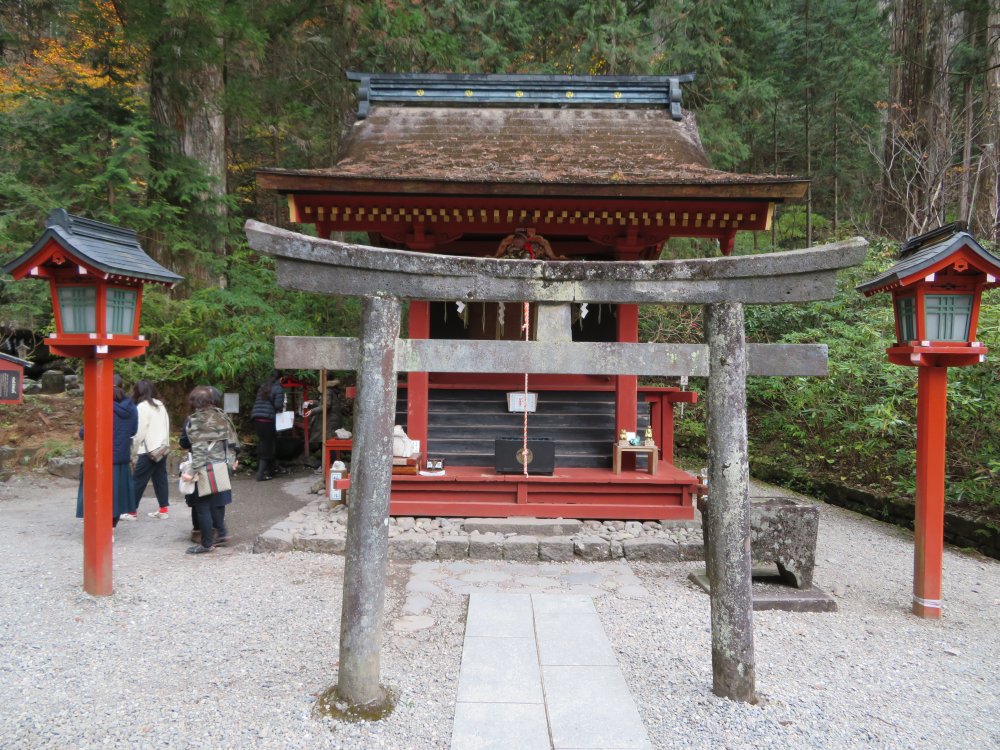
Mitomo Shrine is believed to have been founded around the same time as the Daikokuden.
There was a spring in the back named Futara-reisen (sacred spring of Futara). The spring water is said to be good for healing the eye as well as brewing sake.

Sacred spring of Futara-reisen. The emblem on the offering box is of the Tokugawa Family.
We left Futarasan-jinja to visit the last place of our visit to the religious site, Taiyuuin. On the way at the bottom of the entrance to Futarasanjinja was the Jougyoudou, part of Rinnouji Temple. Jougyoudou could literally mean “continuous ritual temple”. I understand ninety days continuous praying was practiced in the building. Jougyoudou was founded in the 12th century, but the current building is from 1619 two years after Toushouguu was founded. Jougyoudou is linked to another building Hokkedou by a bridge in a unique building style only of the Tendai sect.
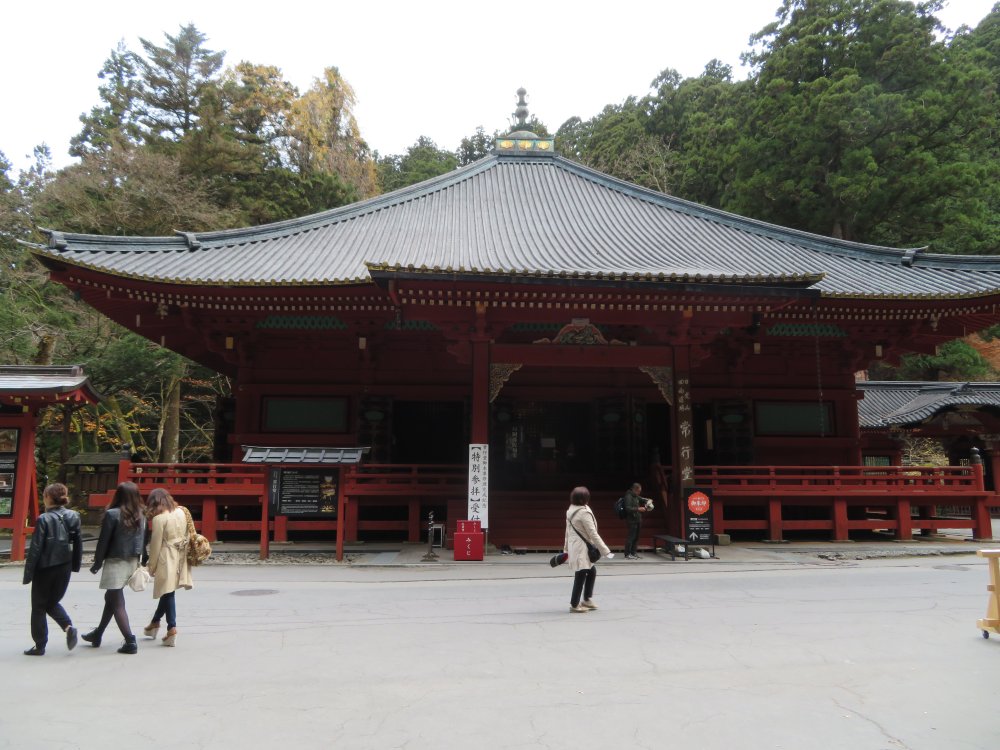
Jougyoudou literally means “continuous ritual temple”. I understand ninety days continuous praying was practiced in the building.
We went past Jougyoudou to reach the entrance to Taiyuuin. Taiyuuin is the mausoleum of the third Tokugawa shougun Iemitsu constructed and completed by his son Ietsuna in 1653, two years after Iemitsu’s death. In accordance with his will, his mausoleum was placed in Nikko, close to Toushouguu shrine of his grandfather Ieyasu that Iemitsu had thought so highly of. The website of Nikko Tourist Association tells that Iemitsu left in his will that his mausoleum should be more modest than Toushouguu which is why it is smaller and less grander but the highest art and technique has been inconspicuously applied.
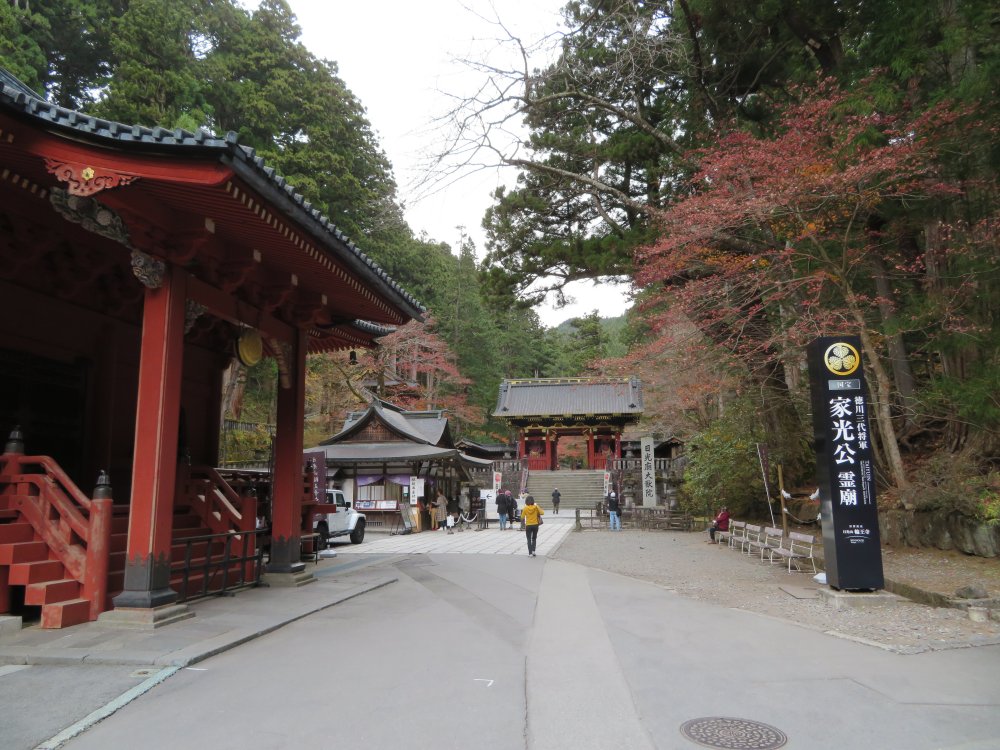
We went past Jougyoudou to reach the entrance to Taiyuuin. The sign on the right tells that it is the mausoleum of the third Tokugawa shougun, Iemitsu.
We entered the mausoleum through the Nioumon. Niou is a stern powerful Buddhist deity that fights evil. It is a common sight for a pair of nious to guard the entrance gate to temples, as at this mausoleum.
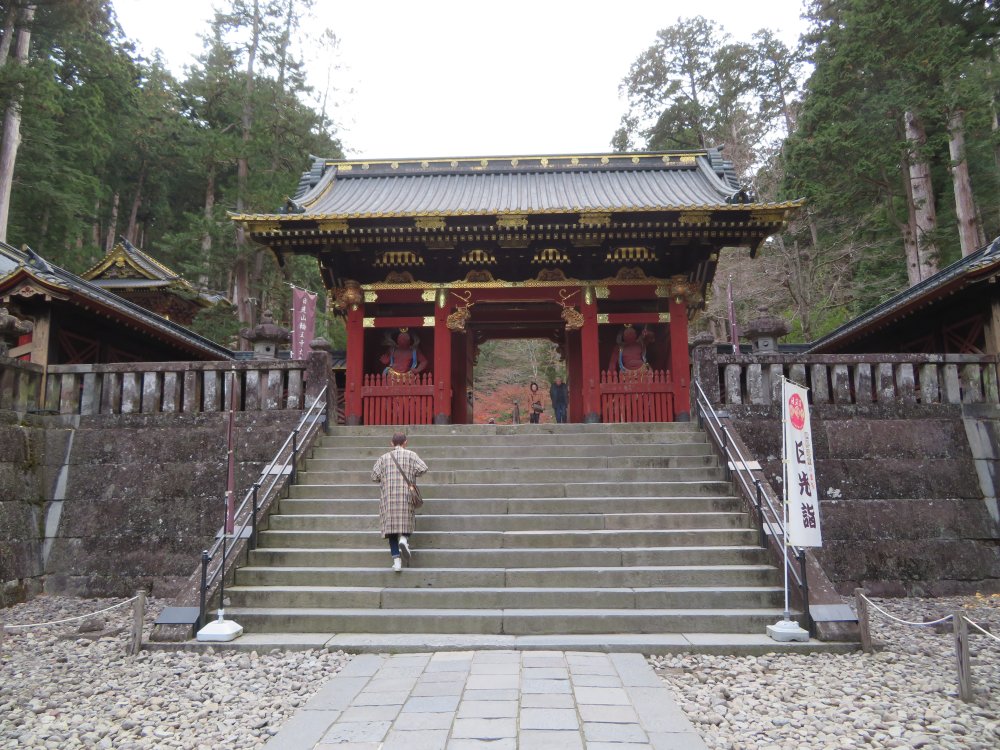
We entered the mausoleum through the Nioumon. Niou is a stern powerful Buddhist deity that fights evil.
The route turned left, and up the steps to the Nitenmon gate. This is the largest gate of the Nikko temples and shrines. A grand frame is displayed at the center top with the inscription Taiyuuin in Kanji characters written by the then Emperor Gomizunoo. Nitenmon is so called because of its display on both sides of two deities Jikokuten and Koumokuten of the four Buddhist deities that guard the world. On the other side of gate Fuujin (God of Wind) and Raijin (God of Thunder) protects the gate.
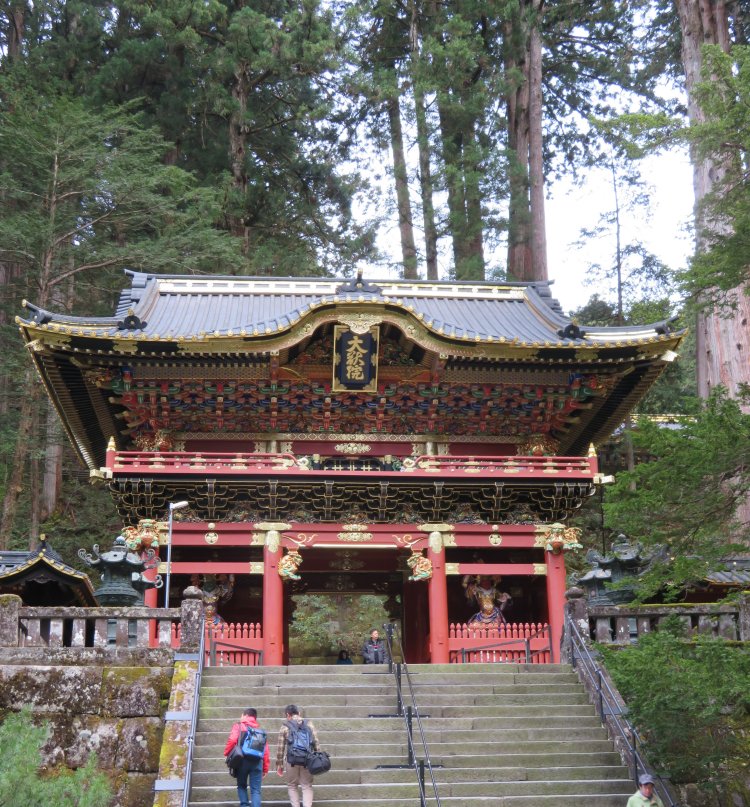
Nitenmon is the largest gate of the Nikko temples and shrines. A grand frame is displayed at the center top with the inscription Taiyuuin in Kanji characters written by the then Emperor Gomizunoo.
Once you enter the gate there is a plateau with a belfry on the right and a drum tower on the left before the steps leading to the next gate, the Yashamon Gate. The gate is so called because it is protected by four yashas or yakshas.
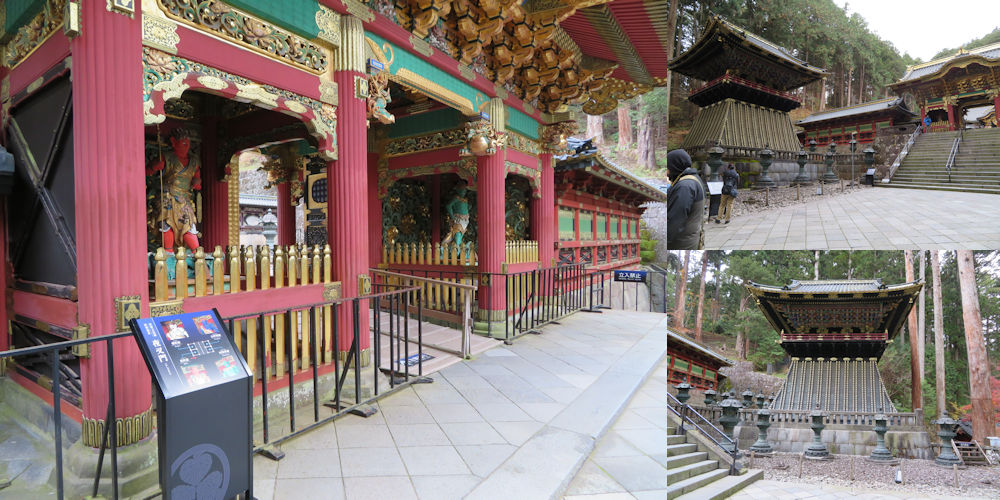
The Yashamon Gate (left), the drum tower (upper right) and the belfry (lower right).
The gate leads us to the main buildings of the mausoleum, Haiden and Honden. The arrangement of the buildings is in the Gongen style, as is those of Toushouguu, where people deliver their prayers in the Haiden (hall of worship) in front of the Honden (main temple). The Haiden belongs to this world and is segregated from the Honden belonging to the other world, with the Ainoma (in between room) linking the two buildings. The features of the buildings, although utilizing the highest techniques and craftsmanship from the early Tokugawa days, is not grand and gives visitors a solemn feeling of a mausoleum. It should be noted that most of the grand Tokugawa mausoleums were destroyed by the bombing of WWII, leaving Taiyuiin in Nikko a rare if not the only complete surviving Tokugawa mausoleum.
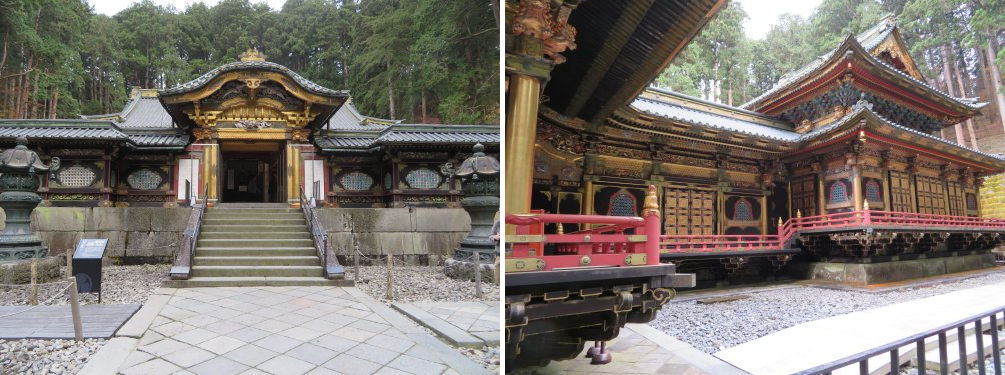
The Haiden (left) and the Honden linked to the Haiden by way of the corridor like Ainoma (right).
In front of the main buildings, many lanterns are placed. These lanterns were contributed by the highest-ranking feudal lords and the Tokugawa family. The lanterns from the lower ranking feudal lords are placed in the lower level grounds.
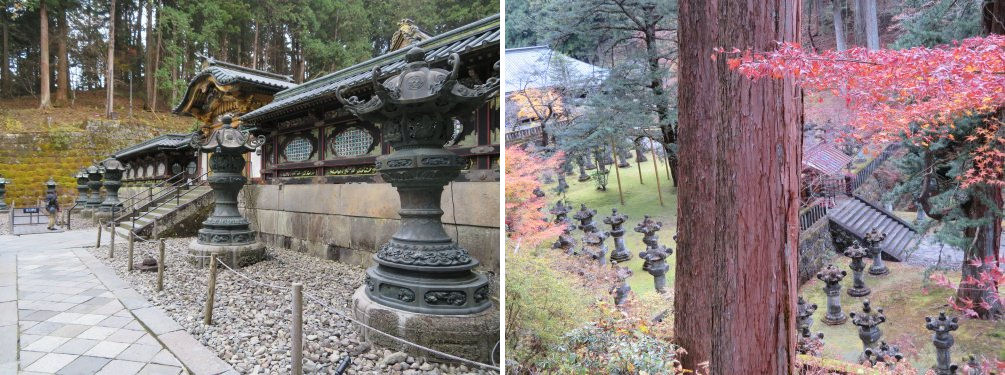
The lanterns from the Tokugawa Family and high-ranking feudal lords were placed by the Haiden (left) while those from the lower feudal lords were placed in the lower grounds (right).
Set aside from the main buildings is the grave of Iemitsu, behind the Koukamon Gate. The grave is closed to the public. This concluded our tour of the Nikkou shrines and temple. The entire tour took about six hours.
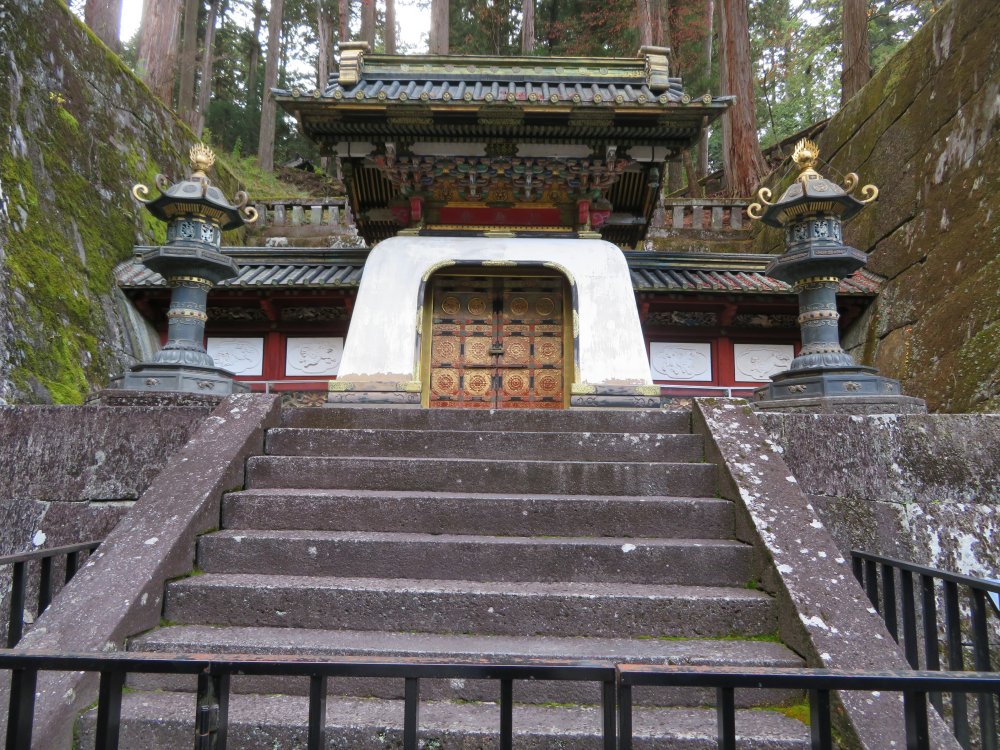
The grave of Iemitsu lies behind the Koukamon Gate.